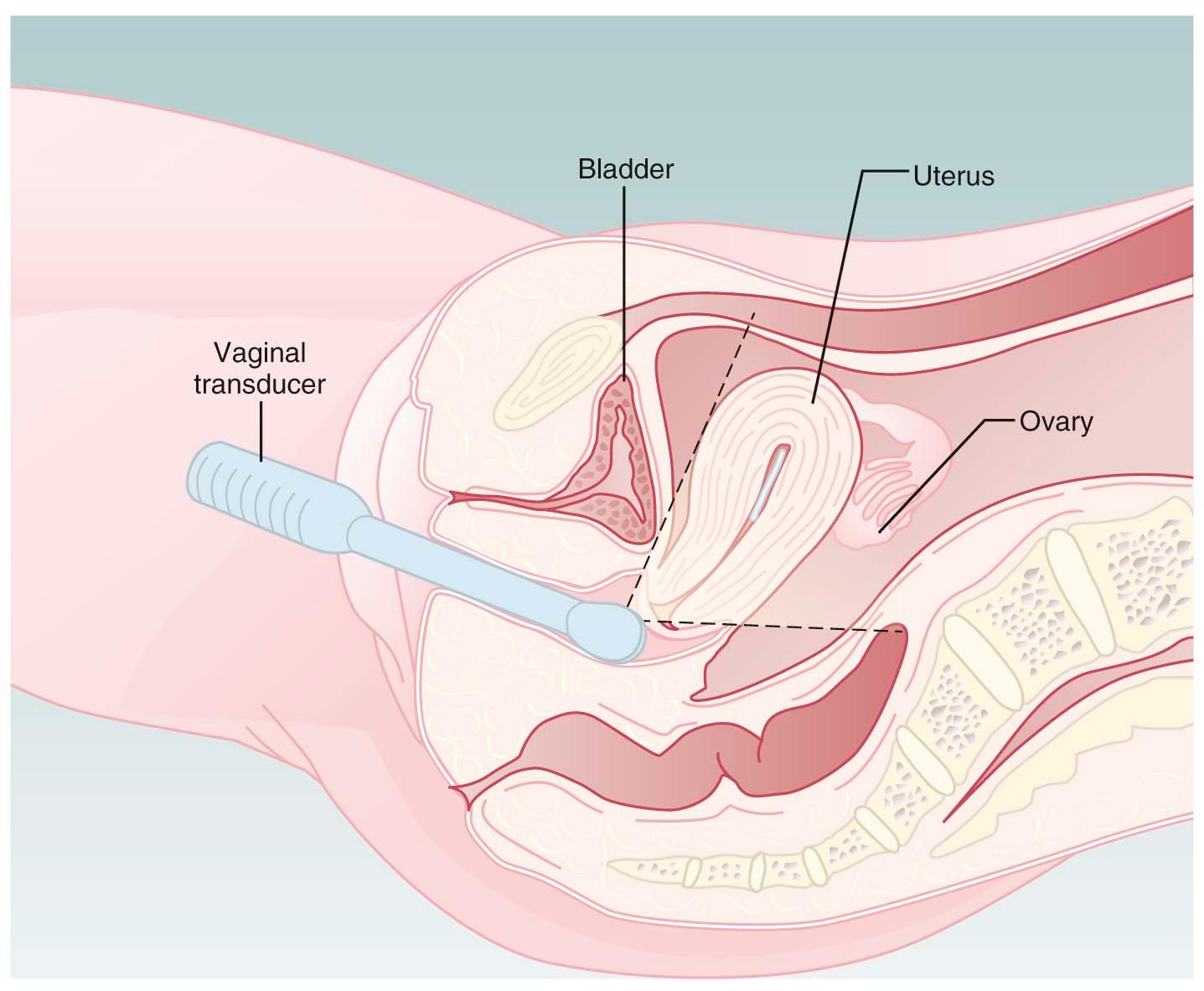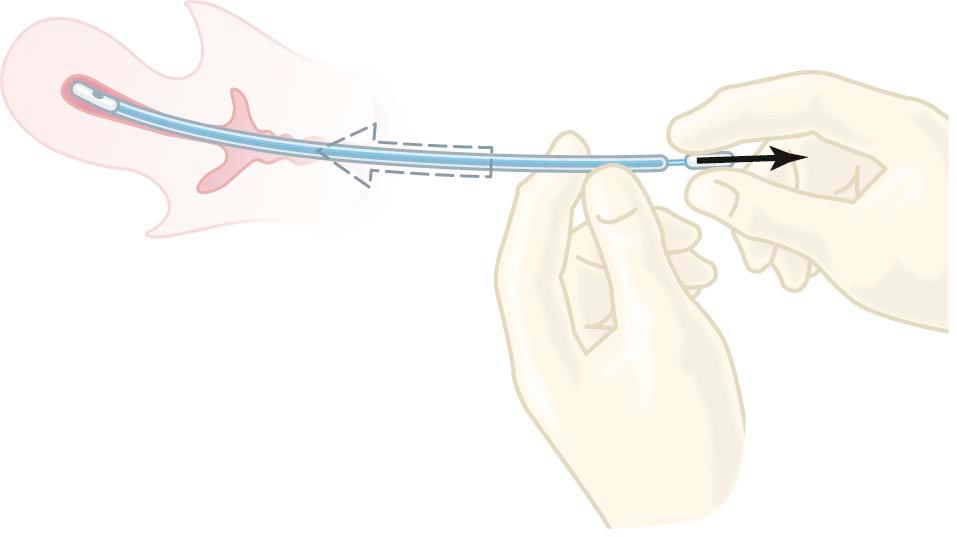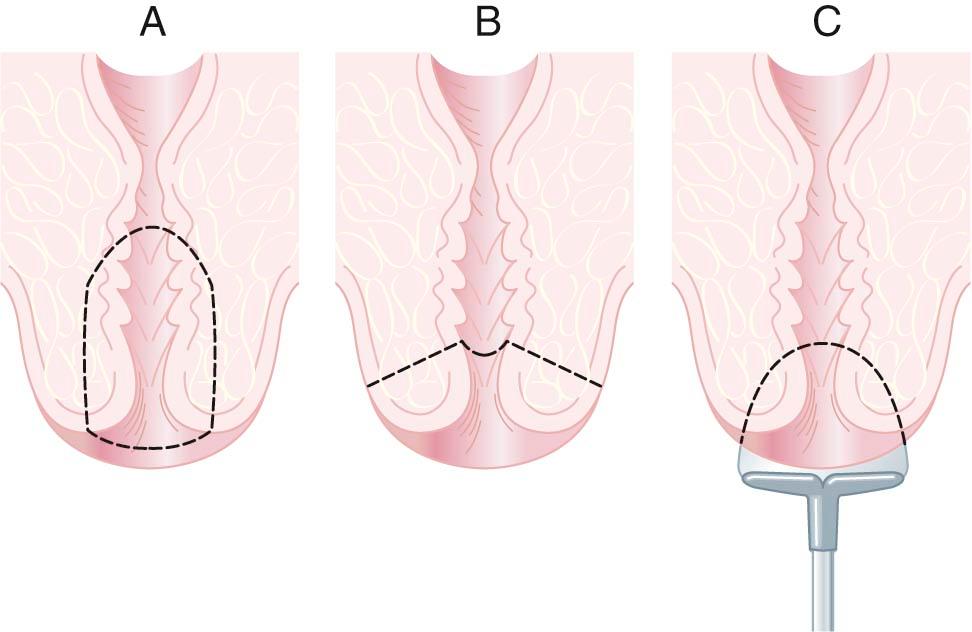Physical Address
304 North Cardinal St.
Dorchester Center, MA 02124
Imaging studies are used in gynecology to evaluate pelvic masses and also to assist in oocyte retrieval. Common modalities used include ultrasonography, sonohysterography, computed axial tomography, magnetic resonance imaging, mammography, and hysterosalpingography.
Before any gynecologic procedure is performed, a process of informed consent should occur during which the patient collaborates and makes a choice with her surgeon. Most procedures are elective, allowing for several treatment options to be considered.
Training for gynecologic procedures begins in residency and continues throughout a surgical career, with newer procedures being added as newer technologies are developed. Privileging refers to the process whereby surgeons are given the right to perform certain procedures in the hospital or clinic setting.
Common gynecologic procedures range from minor biopsies of the vulva, cervix, and vagina to endoscopic procedures of the uterus and pelvic cavity and major surgeries such as adnexectomy and hysterectomy.
New techniques in gynecology are less invasive and may involve the use of laser technology and surgical robots.
Imaging studies using sound wave energy (ultrasound), magnetic field energy (magnetic resonance imaging [MRI]), or radiation are often ordered, and sometimes the imaging is performed by the gynecologist to assist in the diagnosis and treatment of reproductive tract disorders. Gynecologic surgical procedures are becoming less invasive and safer, and advances in surgical techniques are resulting in more effective and more efficient reproductive health care for women. Table 31-1 lists the more common imaging modalities and procedures used in gynecologic practice.
| Diagnostic Indications | Therapeutic Indications | Comments | |
|---|---|---|---|
| Imaging Studies | |||
| Ultrasonography (transvaginal) | Evaluation of pelvic cysts and tumors | Oocyte retrieval for in vitro fertilization | See Chapter 34 No radiation exposure |
| Sonohysterography | Evaluation of uterine cavity for polyps and/or tumors | None | Also called saline infusion hysterography |
| Computed axial tomography (CAT or CT) | Evaluation of pelvis and abdomen for cysts and tumors | None | Radiation exposure |
| Magnetic resonance imaging (MRI) | Evaluation of pelvis for cysts, tumors, and uterine abnormalities | None | No radiation exposure |
| Breast imaging (mammography) | Identification of breast pathology; screening criteria remain controversial | None | See Chapter 30 Ultrasound and MRI also used |
| Hysterosalpingography | Evaluation of uterine cavity and fallopian tubes for patency | Some studies show small increase in pregnancy rate with oil-based media | See Chapter 34 |
| Procedures | |||
| Endometrial sampling | Obtaining tissue for histopathologic examination | Intentional tissue damage is reported to increase implantation rate in some studies | Pipelle endometrial suction See Figure 31-2 ; see also Chapter 34 |
|
Obtaining tissue for histopathology | Complete excision of pathologic tissue in some cases | Common sites for biopsy include the vulva, vagina, cervix, and endometrium |
| Colposcopy | Identification of cervical, vaginal, and vulvar pathology | None | See Chapter 38 |
| Cryotherapy, electrotherapy, and laser therapy | Laser may be used for excisional cone biopsy of the cervix | Tissue destruction and ablation | See text, this chapter |
| Dilation and curettage (D&C) | Evaluation of endometrium | May temporarily control dysfunctional uterine bleeding | Polyps may be identified and removed |
| Sterilization and abortion procedures | NA | Prevent pregnancy or terminate existing pregnancy | See Chapter 27 |
| Pelvic endoscopy (laparoscopy) | Multiple | Multiple | See text, this chapter |
| Pelvic floor procedures | NA | Surgical repair for stress urinary incontinence and organ prolapse | See Chapter 23 |
| Hysteroscopy | Evaluate uterine cavity for the presence of polyps or tumors | Removal of polyps and/or tumors Ablation of tissue |
See text, this chapter |
|
Primarily therapeutic but unexpected pathology may be found (e.g., undiagnosed endometrial or endocervical cancer or leiomyosarcoma) | See Table 30-2 | See text, this chapter and Chapter 19 Morcellation of malignant uterine tissue can lead to spread of cancer |
|
Provision of tissue for histopathologic diagnosis of an adnexal mass | Treatment of adnexal masses, benign or malignant, with hysterectomy or with pathology (e.g., tubal pregnancy) | May be performed separately or at the same time as hysterectomy |
| Robotic procedures | Currently being studied | Multiple | No apparent advantage for benign indications See text, this chapter |
Ultrasonography is widely used for diagnostic purposes and even to guide therapeutic applications such as oocyte retrieval for in vitro fertilization (IVF). The ultrasonic probe emits high-frequency sound waves that provide an image of tissues when reflected back to the sound source (a probe). Ultrasound is safe for both pregnant and nonpregnant women and should be used to assist but not replace adequate physical examination and history-taking. Ultrasound may be two-, three-, or even four-dimensional when movement is detected in real time. Two-dimensional technology is the most common, with three-dimensional imaging and movement detection and interpretation reserved for special studies, such as fetal cardiac evaluation. The sound-generating probe may be placed on the abdominal wall (transabdominally) or into the vaginal canal (transvaginally). Transvaginal insertion is more commonly used for gynecologic evaluation.
Figure 31-1 illustrates the transvaginal placement of the probe against the uterine cervix. This placement allows for excellent visualization of both normal anatomy and abnormal pelvic masses (uterine and adnexal). The size of ovarian follicular cysts can be measured and followed over time to assist fertility evaluation and treatment as well as oocyte retrieval (see Chapter 34 ). When saline is infused through a catheter into the uterine cavity during transvaginal ultrasonography, a sonohysterogram may be visualized and recorded.

Computed axial tomography (CAT or CT) uses computer algorithms to form cross-sectional x-ray images of pelvic tissues. Contrast media may be used to enhance the images. CT scanning uses radiation and for this reason ultrasound or MRI may be preferred in pregnant patients.
MRI takes advantage of differing characteristics of body tissues when the tissues are exposed to magnetic field energy. By visually distinguishing between tissues such as fat and body fluids like blood and lymph, MRI is useful for the evaluation of uterine and ovarian structures. Uterine adenomyosis (see Chapter 25 ) and certain breast lesions may be detected using MRI.
Mammography uses radiation that penetrates compressed breast tissue to screen for breast cancer. There is both a false-positive and false-negative interpretation error associated with screening mammograms. Both MRI and ultrasound may be used to improve diagnostic accuracy (see Chapter 30 ).
Hysterosalpingography (HSG) employs fluoroscopy and radiopaque dyes injected transcervically to create an image of the uterine cavity and to verify fill and spill of dye out of the fallopian tubes (tubal patency). Uterine polyps and submucous uterine fibroids may be detected. Some studies show a statistically significant increase in the pregnancy rate after HSG, especially when oil-based media are used, suggesting therapeutic value. Figure 34-2 shows an HSG study.
The gynecologic surgeon should have a high level of training during residency, followed by an ongoing commitment to retraining and retooling as effective procedures are added or substituted for outdated ones. Training methods now include computer-assisted simulations of procedures, providing for greater patient safety while the surgeon is learning and retraining. All facilities should have an active quality assessment program to continuously evaluate the safety and appropriateness of gynecologic care, including surgery.
Before any procedure or surgery begins, the most appropriate option (when more than one exists) for an individual patient must be selected, with optimal patient involvement in the decision-making process included as part of informed consent.
At least 80% of gynecologic surgical procedures are considered to be elective; that is, there are other alternative treatments to be considered. The appropriateness of performing these procedures should be evaluated by physician and patient on an individual basis ( Box 31-1 ). The trend toward minimal invasiveness in gynecologic surgery should not lead to minimal or questionable indications.
* PREPARED is a useful mnemonic checklist for preoperative assessment of the appropriateness of a health care procedure, including elective gynecologic surgery. An analysis of each gynecologic or other health care procedure can be carried out, and the patient completely and efficiently counseled, using this format.
P is the procedure
R is the reason or indication
E is the expectation
P is the preference that the patient may have (e.g., to avoid surgery or regarding the side effects of medication)
A is the alternative or alternatives
R is the risk or risks
E is the expense (hospital costs and surgeon's fees)
D is the decision whether or not to perform the procedure
The rapid introduction of new technologies can present a challenge to the surgeon, who will need to keep up with the most advanced procedures, and to the institution, which is required to be certain that those who are granted surgical privileges have been properly trained and are currently qualified.
After a surgeon's credentials (diplomas, training certificates, and licenses) have been properly verified, a useful classification for the purpose of privileging stratifies procedures into the following levels:
Level 1: procedures not requiring additional training after residency (e.g., dilation and curettage [D&C], cervical conization, adnexal excision, and abdominal or vaginal hysterectomy)
Level 2: procedures requiring additional training (e.g., laparoscopic myomectomy)
Level 3: procedures requiring advanced training and special skills generally acquired during subspecialty training (e.g., radical hysterectomy, tubal anastomosis, or oocyte harvesting)
As new procedures are incorporated into basic residency training, they can be reclassified.
The patient should be thoroughly counseled about surgical risks as part of the process of informed consent (see Chapter 1 ). In general, risks fall into three categories: risks of anesthesia, intraoperative risks, and postoperative complications. Risks of anesthesia depend on the type of anesthesia used (awake sedation, regional anesthesia, or inhalational agents). Regional anesthesia carries the risk of infection, postprocedural spinal headache, and failure, in which case an inhalational agent must be added to the regional anesthetic. Inhalational agents may be associated with the risks of aspiration pneumonia, allergic reaction to the agent, and damage to teeth or airways if intubation is necessary. Stroke, myocardial infarction, and death can result. The intraoperative risks include excessive bleeding and unintended damage to organs or tissues. Postoperative risks include infection, persistent bleeding, and thrombosis, all of which can lead to significant morbidity or even mortality. The specific risks of each procedure are described below.
One of the most common minor gynecologic surgical procedures is dilation of the cervix and curettage of the endometrium (D&C). Recent advances in office-based instrumentation for diagnosis (hysteroscopy, endometrial biopsy [ Figure 31-2 ], and ultrasonic evaluation of endometrial thickness) have resulted in an appropriate decrease in the use of D&C. However, if cancer of the cervix or endometrium is suspected, a thorough fractional curettage may be the best procedure to use to confirm its presence.

D&C may be a diagnostic or a therapeutic procedure. A diagnostic D&C is performed for irregular menstrual bleeding, heavy menstrual bleeding, or postmenopausal bleeding, unless an endometrial biopsy has already revealed a diagnosis of malignancy. Irregularities in the contour of the endometrial cavity, either congenital (e.g., uterine septum) or acquired (e.g., submucous myomata), are sometimes determined during the operation. The finding of a thin endometrium on a transvaginal ultrasound (generally <5 mm) may eliminate the need for biopsy or D&C in some women. In patients younger than 40 years of age who have irregular bleeding, hormonal manipulation preceded by office endometrial sampling frequently obviates the need for curettage.
The D&C may have a therapeutic effect in patients with heavy or irregular bleeding as a result of endometrial hyperplasia; endometrial polyps; or small, pedunculated submucous myomas. Unwanted first-trimester pregnancies are usually evacuated by dilation and suction curettage, although nonsurgical techniques are now available.
The D&C operation is performed with the patient in the dorsal lithotomy position. Most D&Cs are now performed on an outpatient basis. Paracervical blocks and local anesthesia are frequently employed.
A pelvic examination is done under anesthesia, and after sterile preparation, a weighted speculum is placed in the posterior vagina. The cervix is grasped with a single-toothed or double-toothed tenaculum. A Kevorkian curette is used for curettage of the endocervical canal. The depth of the uterine cavity is determined with a uterine sound, and the cervix is then dilated with a set of graduated dilators. A small polyp or ovum forceps is introduced through the dilated cervix and gently rotated to remove any endometrial polyps. A thorough curettage is done with a sharp curette, proceeding with each stroke in either a clockwise or a counterclockwise manner to ensure that the entire uterine cavity has been covered. Potential complications of D&C are listed in Box 31-2 .
Most common: Hemorrhage, infection, and cervical laceration
Most concerning: Uterine perforation
Happens even in experienced hands
Risk increases with retroverted uterus, pregnancy, and postmenopausal patients with endometrial cancer
Dilation and curettage not recommended with infection (except in an emergency)
Conization of the cervix is a procedure in which a cone-shaped portion of the cervix is removed for diagnostic or, occasionally, for therapeutic purposes. The section of the tissue surrounding the external os represents the base of the removed specimen. The apex is either close to the internal os ( Figure 31-3, A ) or close to the external os (see Figure 31-3, B ). Conization may also be performed in an office setting, using loop electrosurgical excision (see Figure 31-3, C ) or large loop excision of the transformation zone of the cervix. Loop excision should not be performed before identification of a cervical intraepithelial lesion that requires treatment by colposcopically directed punch biopsy. The technique and complications of cervical conization are also covered in Chapter 38 .

Colposcopy is the use of magnification to view and evaluate the cervix and to determine optimal sites for biopsy. A more detailed description of this procedure is provided in Chapter 38 .
The technique of cryoablation is commonly used to treat condylomas of the cervix, vagina, and vulva. These procedures almost always are office-based, and little if any anesthesia is required.
Laser instruments are sources of intense beams of light energy. The letters in the acronym laser stand for light amplification by the stimulated emission of radiation. When used in surgery, this radiant energy is converted inside the cell to thermal or acoustic energy, resulting in controlled vaporization or coagulation of tissue. Lasers come in longer wavelengths (carbon dioxide [CO 2 ]) or shorter wavelengths (neodymium : yttrium-aluminum-garnet [Nd : YAG], potassium-titanyl-phosphate [KTP], and argon) that can be propagated along flexible optical fibers. This allows delivery of energy for cutting, vaporization, and coagulation to tissues in locations unreachable by a CO 2 laser.
Because of the additional expense of laser equipment and the lack of evidence for improvements in outcome, the use of this technology has been decreasing in recent years. Nevertheless, laser technology has been applied to conization of the cervix, removal of leiomyomas (myomectomy), and destruction of the ectopic endometrial implants of endometriosis.
Become a Clinical Tree membership for Full access and enjoy Unlimited articles
If you are a member. Log in here